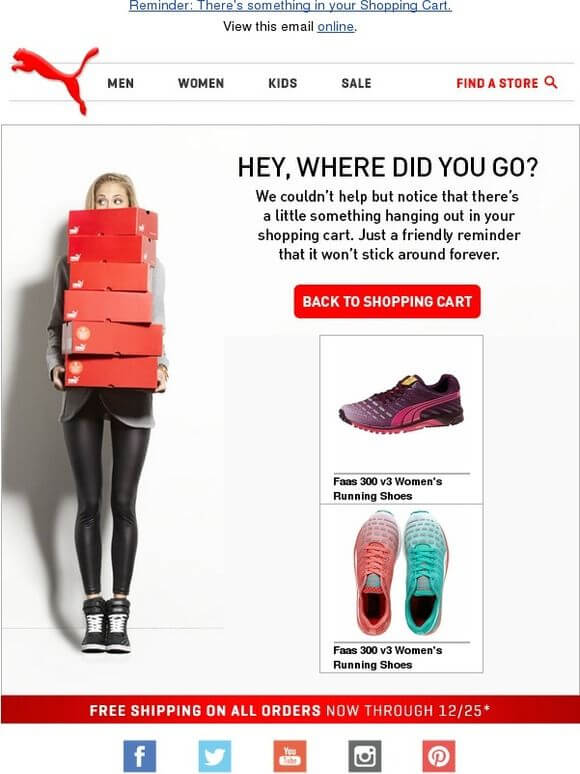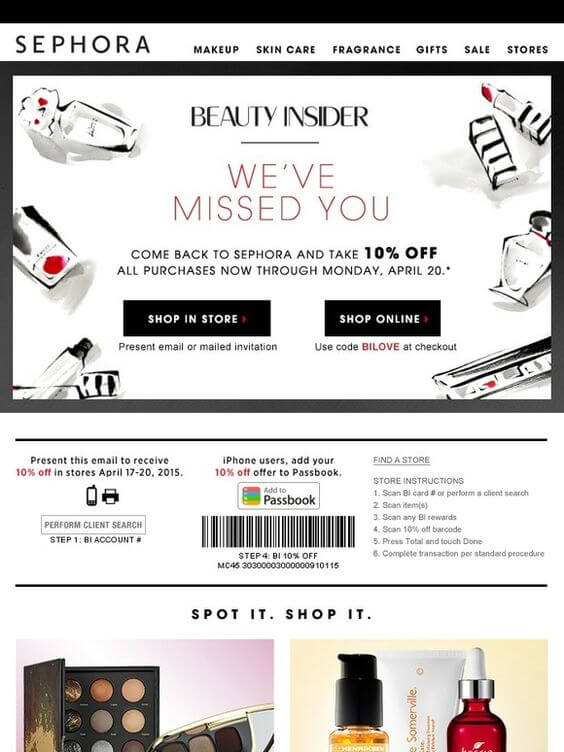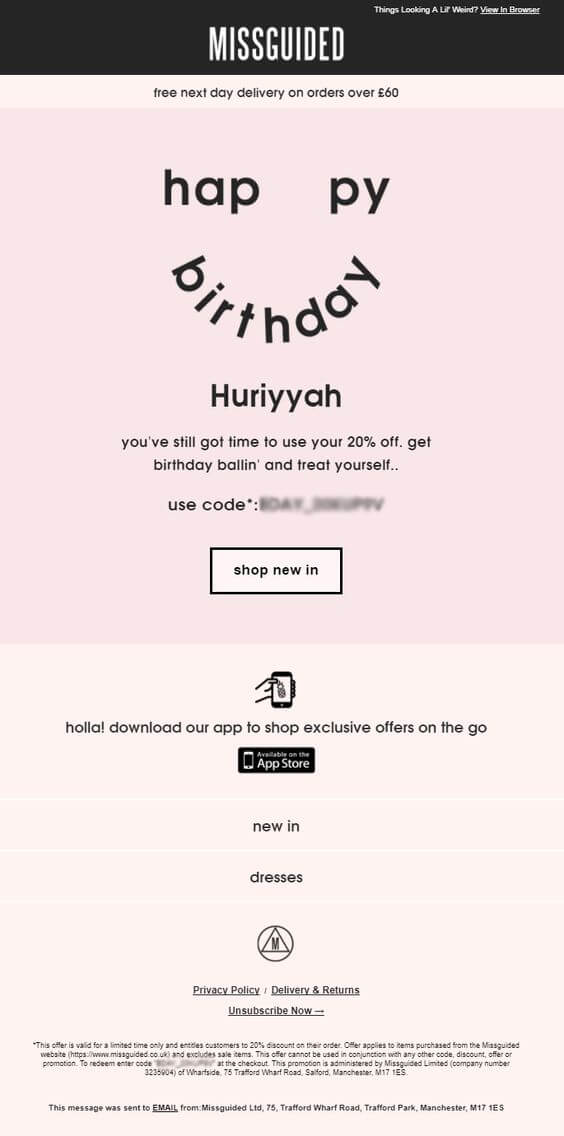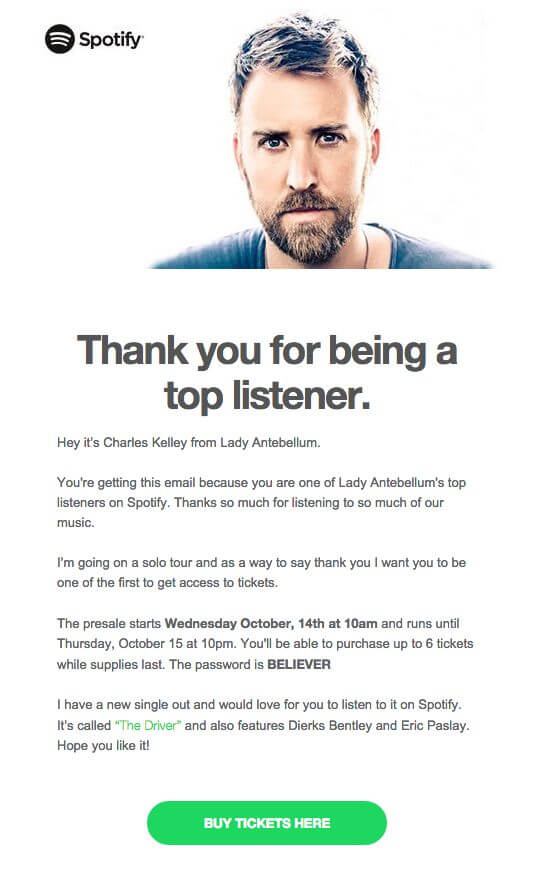There are three key steps to form a profitable segmentation strategy and targeted email marketing campaign:
- Setting up a subscriber base and segmenting the audience by certain categories.
- Choosing targeted email marketing services or all-in-one marketing automation tool and integrating it with your e-commerce platform and CRM.
- Creating several versions of personalized emails.
Step 1. Setting up a subscriber base and segmenting the audience
First off, you have to define who will be among your newsletter readers. Most likely, they will be the users who have previously filled out your subscription forms. Now, choose the target parameter.
These can be:
Location targeting. Do you have subscribers from different cities and even countries? In most cases, your proposal should be different for them. At least, segment the database by timezone.
The more advanced technique is adding an image of a specific city related to the subscriber’s geography or making the newsletter multilingual.
You can also include recommendations about entertainment, sales, and events held locally relevant to your business specifics.
Gender and age targeting. If emails are designed for a group of people you don’t belong to, they are less likely to be read, more often deleted, and very often marked as spam.
To avoid the greatest punishment of all email marketers (spam and bans) and make the message more understandable to the reader, you can start small – define the subscribers’ gender and age.
A nice method is to apply dynamic content that automatically adjusts to recipient data. By using it, you can even find such confidential information as the size of clothes, shoes, and rings for a particular recipient.
The success of your email campaign will depend on how much detailed subscriber’s information you gathered.
This approach will also prevent you from some unpleasant situations. For example, you’ll have a clear idea of the financial capabilities of your subscribers.
You don’t want to have young girls and boys in your base, whom you offer designer linen dresses that they cannot afford.
Customized fields. In modern email marketing automation systems, there are special tags by which information from the database is pulled into each email.
All you need is to correctly place the tags in the email and configure the transfer of data for these tags. It can be a name tag, purchase date, or product that remained unpaid.

Shopping preferences and behavior targeting. It is the most potent user parameter, which more effectively than other parameters allows you to increase sales.
Understanding what your user’s buying behavior is, where exactly he/she is in the purchasing funnel, you can prepare the most relevant offer and push him/her to the next step.
How does it work?
Your customers may be at different stages:
- Newbie
- Regular
- Returning
- Lost users
For a newbie, you need to create a welcome letter taking into account the age, gender, and geographical location. Further emails should not sell openly; try to gain subscribers’ trust by recommendations, recognize their interests, pamper them by storytelling, and share reviews of grateful customers.
Regular customers should be encouraged by the loyalty system: invite them to a private club of honored customers and give a unique discount, thereby increasing their importance.
In the case of returning clients, you should show your gratitude for their loyalty. You can even strengthen an email with the words, ‘We are glad that you are back and present you with a discount’ – something like that.
It is also worth trying to return lost users. Try to send three emails per month, so as not to cause disapproval. Show a subscriber that you miss him/her and specify what he/she is losing by rejecting your offers.
Cart Abandonment Targeted Email. Separately, it is worth identifying the state of the cart. Buyers can add products to the cart but leave the online store without having completed purchase. Or they may stop at the payment stage. Situations can be different.
Your task is to find out what the problem is and provide a solution.
The most widespread types of issues are:
- Some of the buyers are confused and urgently need help in making a purchase decision – your letter can provide this assistance.
- Some of the users made a purchase only once but you can motivate them to become regular customers.
- If someone has selected a product but still not paid for it, you can speed up the purchase process by announcing a deadline after which the price will increase.

Interest targeting. If you have no idea what to offer to your subscribers, find out their possible interests. Give your readers the opportunity to choose what they are interested in right in the letter.
For example:
- you can list topics to choose which they would like to know about from your newsletters;
- you can analyze which one of your website pages they visit more often and on which pages they spend more time. Apply this information to the next campaign.
You can select other data for interest segmentation based on the list of your products. For instance, if you sell sneakers and your client prefers only Nike, you can offer him/her new items only by this brand.
To sum up, the main criteria for a segmentation strategy are:
- Gender
- Age
- Location/time zone
- Preferences in the products, brands
- Interests
- The stage at the sales funnel
- Purchase status
By the way, a nice idea is to create emails with greetings to some special events like birthdays (congratulate and offer a gift option), high frequency of purchases, etc.

Step 2. Choosing targeted email marketing services
To create targeted letters and track the results of such mailings, nothing can help you better than special email marketing tools.
Why do you need them:
- They allow you to segment subscribers based on various parameters.
- With their help, you can redirect subscribers to landing pages and hold their attention.
- You will facilitate repeat purchases by recommending items from your store.
- You can set triggers to automate the mailing according to user’s actions. So, if one of the users left a cart abandonment, you can catch him or her by sending an appropriate email.
- The in-built analytics system will display information on campaign results and metrics, thus, you’ll know who deleted the message, made the purchase or clicked on the links. This data should be taken into account when creating the next messages to the same people to increase or return their interest to your proposal.
- The mailing system can be integrated with other marketing tools in your arsenal to make your marketing campaigns even more powerful. These can be Google ads, Facebook, SMS mailings, CMS, etc.
The most popular email marketing services are Hubspot, MailChimp, GetResponse, ConvertKit. Also, there is a great batch of more affordable and no less effective Mailchimp alternatives such as Constant Contact, Mailerlite, EmailOctopus, etc.
Which one to choose depends on your database volume and marketing budget. But each of these tools provides you with a full spectrum of features designed to automate your email marketing efforts, make them segmented, targeted, and highly converting.
By applying all these recommendations, you will create a well-functioning segmentation strategy under one umbrella.
It will help you return left customers, make remind-letters for regular clients, and generate profitable offers for new users based on their customer experience. All users’ data will be collected, stored and updated in one place and on time.
Step 3. Creating several versions of personalized emails
When the key preparatory work has been completed and segmentation is set up, your e-commerce platform is integrated with the mailing system and CRM, you know who your subscribers are – it’s time to start creating actionable emails.
To make this task easy, we recommend you write each letter as if you are writing to a friend.
Think about:
- What subject would you add to your email?
- What would the reader focus on?
- What does the reader need?
- How can your products help him/her?
To boost the performance of the mailing, you can carry out A / B testing. Use different headers or experiment with the email body instead of sending the same message to the target group at once.
This will allow you to determine the options with the highest open and response rates, and apply the winning combination to the whole list of subscribers.
Conclusion
Hope I answered the question “What are targeted messages?” as clearly as possible. To conclude, the targeted email marketing campaign means the collection of personal data of your users with the aim to form an individual offer for each subscriber, which is 100% relevant. This is the proven way to increase their loyalty to your company and boost sales.
To start increasing your revenue right now, perform these tasks:
- create a list of user data that you need,
- configure the collection of this data using automated systems,
- design emails based on this data, and
- correctly analyze the results of each launched campaign.
Done!
And what are your favorite targeted email marketing techniques? What tools do you use to segment your database and create personalized letters? I’m super excited to hear about your experience!









